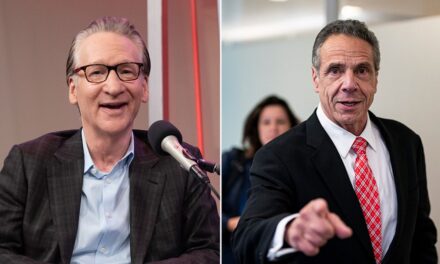In recent years, a curious trend has surfaced among members of Generation Z, drawing inspiration from the flamboyant and extravagant culture of the 1980s. As this cohort reshapes their identity, they seem to be incorporating various aspects of the decade’s aesthetic and social attitudes into their lives. This shift is not merely confined to fashion; it extends to political engagement and personal values, creating a complex tapestry of the past interwoven into the fabric of contemporary society.
The 1980s were characterized by excess, whether through vibrant fashion choices, bold hairstyles, or ostentatious displays of wealth and status. With the rise of television shows and movies that revived 80s sensibilities, many young people are now channeling a nostalgic yet ironic appreciation for that era. Platforms like TikTok and Instagram have amplified this phenomenon, making 80s fashion and culture more accessible and appealing to Gen Z.
One notable aspect emerging from this revival is the phenomenon of “trad-wives.” This term refers to women who choose to embrace traditional roles within the home, in direct contrast to the more progressive strides made by women in recent decades. Gen Z is seeing an influx of younger women who, while recognizing the advancements of feminism and gender equality, are enamored with a lifestyle that draws heavily from traditional gender roles and aesthetics of the past. For many, it is a form of empowerment, allowing them to claim agency over their choices in a world that often seems disillusioned by rapid changes.
Collectively, these “trad-wives” lean into a vintage aesthetic that celebrates femininity through floral patterns, delicate hairstyles, and an overall soft, romantic look that echoes the domesticity often portrayed in 80s media. This choice is not merely a return to the past but a selective curation of nostalgia, framed as a rejection of modern complexities. In a time when many feel overwhelmed by technology and societal expectations, some Gen Z individuals find solace in the perceived simplicity and charm of an earlier time.
On the flip side, the political landscape has also seen a resurgence of 1980s attitudes—most notably through the influence of figures like Donald Trump. His tenure as President from 2017 to 2021 ignited a passionate response among young people, with many resonating with the brash, unapologetic manner characteristic of 80s politics. Trump’s embrace of extravagance and bold rhetoric has, for some, revived an interest in political engagement that mirrors the potency of 80s conservatism.
This affinity for 80s excess reflects a broader sociopolitical trend wherein Gen Z appears torn between progressive ideals and a yearning for the security offered by traditionalism. Many young individuals are engaging deeply with political ideologies that encapsulate confidence and assertiveness, along with a nostalgic view of bygone eras. This presents a paradox: younger generations, often known for their progressive stance on issues such as climate change, social justice, and inclusivity, are simultaneously drawn to figures and fashions that evoke feelings of outdated norms and conservatism.
Moreover, the 1980s were also a period marked by significant cultural shifts, particularly in fashion. Excess in every sense became the order of the day. Bright colors, bold patterns, and oversized silhouettes defined the era, creating a visually stimulating landscape that continues to influence contemporary fashion. This resurgence is not just a matter of nostalgia; it reflects an underlying rebellion against the minimalism and subdued tones that have dominated the fashion scene in recent years. Gen Z revels in the notion of ‘more is more,’ embracing exuberance and individuality through their clothing choices.
The aesthetics of this revival can be seen in the resurgence of items like acid-wash jeans, scrunchies, oversized blazers, and chunky sneakers. The impact of social media can’t be denied; the platform TikTok, in particular, has given rise to countless fashion influencers and users who showcase their contemporary take on 80s styles. These young individuals create viral trends that blend past and present, showing that this is not just about adopting a vintage look—it’s about redefining identity and self-expression in a way that resonates with modern sensibilities.
To truly understand the implications of Gen Z’s embrace of 1980s attitudes, it is essential to consider the factors that shape their worldview. Growing up in an era dominated by rapid technological advancements, economic uncertainty, and significant societal shifts, many young people face a paradox of choice that can feel paralyzing. As they strive to carve out their identities, drawing on the past provides a semblance of stability—a sense of belonging to a narrative that has stood the test of time.
The appeal of the 1980s as a cultural reference point is intertwined with the concept of empowerment through authenticity. By embracing both the excesses of the past and the power dynamics that those aesthetics evoke, Gen Z is carving out a distinctive space where they can experience agency in a world that often feels overwhelming. This paradoxical blend of traditionalism and extravagance is more than mere nostalgia; it is a reflection of their ongoing search for identity amidst a cacophony of competing values and ideologies.
Another driving element behind Gen Z’s penchant for 1980s culture lies in the realization that the salvation of youth is tied to self-expression and confidence. In a society that constantly critiques personal choices, whether in style, politics, or lifestyle, the infectious exuberance of 80s culture acts as a vibrant counterpoint. The emphasis on individualism and celebration of personality presented during this decade offers a liberating lens through which many young people can shed conformity and embrace authenticity.
As Generation Z navigates their formative years, their reinterpretation of past cultural phenomena serves not only as a form of self-discovery but as a powerful statement about making peace with their heritage. In the midst of radical changes in identity politics and societal foundations, the 1980s offer a compelling narrative of self-assertion, mixed with elements of both joy and rebellion. The result is a rich tapestry of expression that encapsulates the complexity of growing up in a rapidly changing world.
In conclusion, the appeal of the 1980s for Gen Z transcends mere aesthetics, linking to deeper societal questions about identity, empowerment, and the search for belonging. As this generation explores what it means to embody both effervescence and restraint, the revival of earlier styles and attitudes serves as a reflection of their own hopes and struggles. Only time will tell how this fusion of past and present will influence future cultural expressions, but one thing is clear: Gen Z is not shying away from extravagance; they are owning it with a modern twist, crafting a legacy that is both uniquely theirs and intimately connected to the larger narrative of cultural evolution.
































